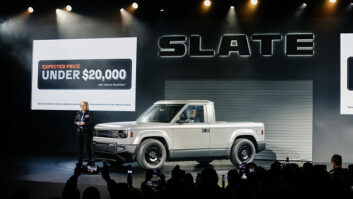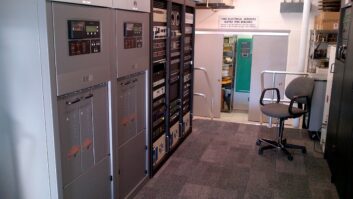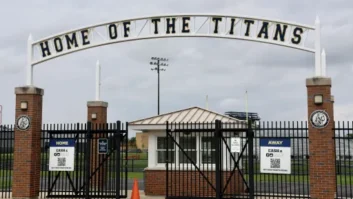In this letter to the editor, the author comments on the story “Hey Radio World, How Are You Tuning In?,” where we asked readers to share fun pictures and stories of their own radio collections. Comment on this or any article. Email [email protected].
Hi Elle and Paul,
Thanks for another great RW SmartBrief article! Well, you asked and I’ll try to answer! I thought that I’d send you a picture of my partial broadcast receiver collection that resides in my living room at home. I’ll just list what’s in the picture, if that’s OK.

On the left-hand side, from the top down: A 1969 KLH-21 FM-only receiver, one of Henry Koss’s first transistorized FM table radios; a 1987 Sequerra SC-1 that was originally designed by Dick Sequerra to receive just (1) FM broadcast station — in this case that station was WEAZ-FM in Philadelphia; a 1941 GE JFM-90 FM Translator, which was an adapter made to receive the pre-WWII 42-50 MHz FM broadcast band; a 1946 Zenith 8H034 AM and FM receiver, which was called “The Major” after Major Edwin Armstrong, the inventor of wide-band FM broadcasting; and a GE 1963 T-1000C, which was General Electric’s very first consumer FM stereo table-top receiver.
In the center, from the top: a 1941 Philco 41-220 AM portable receiver; a 1941 Meissner 9-1047A FM Receptor, another type of adapter that was used to receive the pre-WW II 42-50 MHz FM broadcast band; a 1942 Philco 42-350 AM-FM-SW receiver capable of receiving both FM bands (its pre-WWII FM dial markings are in FCC channel numbers, as opposed to frequency numbers); a 1949 GE X-415 AM-FM-SW receiver that utilizes the famous GE “guillotine” front-end tuner, which uses sliding metal plates and a windlass dial-string mechanism that resemble a French guillotine.
Finally, on the right-hand side, from the top: a 1960 Sarkes Tarzian 723-501 FM-only table-top receiver (Tarzian’s company was known for manufacturing the early blue-colored selenium rectifier diode stacks that were found in many early Zenith radio receivers); a 1948 Zenith 8H832 AM-FM receiver; a 1941 Pilot T-301 AM and low-band FM receiver; a 1949 Zenith 7H820-Z AM-FM bakelite table-top receiver; and another GE T-1000C.
I have all of these radios fully restored and they all work and sound great! They speak proudly of the high-quality consumer broadcast receiver manufacturing in the USA that at one time was simply the best.
Regards,
Steve Hemphill, owner, Solid Electronics Labs, licensee, WA2XMN, Alpine, N.J.
[Check Out More Letters at Radio World’s Reader’s Forum Section]







